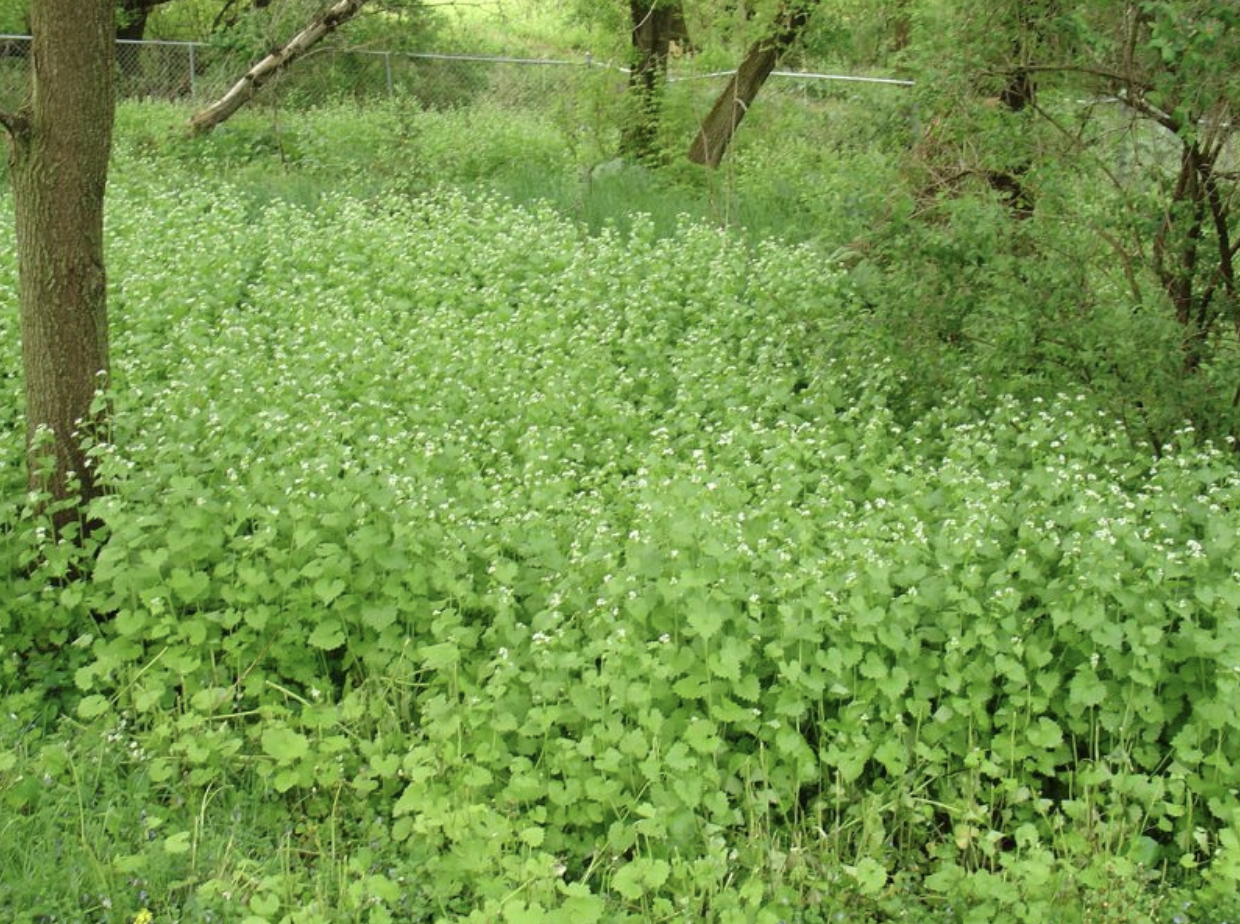Invasive Species of the midwest: A Soil Sci 101 Project
Garlic Mustard
Despite being such a small plant, they have quite a hefty impact on the environment and are often considered to be a threat to the biodiversity native ecosystems.

Overview
Garlic mustard first originated in Europe and Asia, but in the 1800’s it was introduced to the United States and has infested it ever since. It was first brought over for its medicinal and herbal qualities and was soon found to be good for erosion control. It got its name, garlic mustard, because when its leaves are crushed it has a garlic-like smell. Despite the garlic-like smell, the plant is actually quite unpalatable for most native animals here in the United States. It's only really useful aspect nowadays is the fact that it can control erosion, other than that all it does is cause harm.
Despite being such a small plant, they have quite a hefty impact on the environment and are often considered to be a threat to the biodiversity native ecosystems. The wind spreads the seeds of the plant and allows it to be pretty much everywhere. The garlic mustard blooms earlier in the spring than most plants; it blocks out the sunlight and outcompetes other plants for water and nutrients, which are vital to their survival. This impact is only amplified each year as climate change ravages through our earth. As seasons start to change faster than ever before, many plants need time to adjust, but the garlic mustard does not. The garlic mustard also restrains the growing of trees which are able to store carbon dioxide and slow climate change. Garlic mustard weakens the entire ecosystem because many animals also rely on the understory of forests. On top of all of that, garlic mustards roots release chemicals that alter the fungi underground which is essential for transporting nutrients between the native plants. It is also rather challenging to get rid of garlic mustard.
When trying to get rid of garlic mustard permanently, be prepared for it to take up to 5 years. In order to get rid of it, seed development must be halted and the seed bank must be entirely exhausted. In order to do this, you must extract the plants from the ground before they set seed. If you wait too long, the action of pulling them out of the ground will spread the seed even more. The best time to do this would be after a good rain; this allows the ground to be soft and makes getting the entire deep digging tap root. The final thing that you have to make sure of is to not compost the dug up plants; this would again cause the seeds to be spread.


Impact on the Environment:
Due to its vast number of seeds and ability to travel immense distances, Baby’s breath is able to outcompete native plants such as wormwood or pitcher’s thistle by greatly reducing the amount of nutrients available in the soil (Baby’s-Breath Gypsophila Paniculata L.). Along with this, baby’s breath attracts numerous pollinators, such as bees, due to its large amount of flowers and bright colors, which unfortunately furthers the spread of this invasive species. Not only do these native plants forcefully lose their habitats, but baby’s breath does act as a food source or shelter for wildlife due to its unpleasant odor and toxicity (Baby’s-Breath Gypsophila Paniculata L.).
References
Garlic mustard - characteristics, cultivation and use. (2019, September 10). Retrieved April 11, 2022, from https://www.live-native.com/garlic-mustard/
Garlic mustard: Invasive, destructive, edible. (2020, July 22). Retrieved April 11, 2022, from https://www.nature.org/en-us/about-us/where-we-work/united-states/indiana/stories-in-indiana/garlic-mustard/
Alliaria petiolata (garlic mustard). (n.d.). Retrieved April 19, 2022, from https://www.minnesotawildflowers.info/flower/garlic-mustard
Strategic planting to combat garlic mustard. (n.d.). Retrieved April 19, 2022, from https://nativeplantherald.prairienursery.com/2016/05/chief-invasive-strategist-wild-ginger-repels-garlic-mustard/